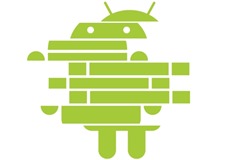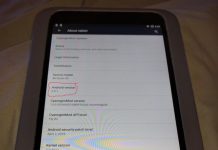 It depends on how you look at it, really.
It depends on how you look at it, really.
I had the thought after glancing at an article on Gizmodo pointing out that the 16-month-old Android 5.0 Lollipop is now the most-widely-used version at 36.1% of installed versions, with the year-older Android 4.4 KitKat slightly behind at 34.4%. Only 2.3% of systems have the very newest, Android 6.0 Marshmallow.
Gizmodo’s writer Chris Mills proclaims:
Why should you give a crap about the popularity of software release? Well, because it’s a telling indicator of a big problem for Android that refuses to go away. Having Android users fragmented across ten different versions of Android makes it hard for developers to write apps and services. That means Android apps are often given less work, if written at all.
It also means it’s hard to attract people to Android with the latest features when those features are only available in the latest operating system, which hardly anybody installs.
But not so fast, says the most popular comment on the article. A user by the nickname “RodTorfulson’sArmada” points out that the kind of “fragmentation” Mills talked about doesn’t actually exist—because Android 4.0 through 6.0 were made to use effectively the same APIs, so software written for one version will usually run on all of them. The only place “fragmentation” exists is in security patches, as Google tends to prefer to make a new version of Android rather than patch older ones.
There have been five major versions of the OS since and including 4.0, yet 4.0 will still run most modern Android apps with no problem thanks to those APIs. That’s a lot more versions of the OS than iOS supports apps across.
To be sure, Android does have the problem that it’s hard to get cell phone companies to provide operating system patches, especially for phones more than a year or two old, and doubly so if, like Republic Wireless, it uses a heavily-customized version of the operating system to support nonstandard features. (My old first-gen Moto X got one major OS update from Republic, then nothing else ever again.) That’s a problem the iPhone doesn’t have, as there’s only one version of the iPhone and iOS, and it’s easy to force an OS update via every phone company that uses one.
But that’s part of the reason Google has moved a lot of features of the Android operating system into its “Google Play Services” app—because it can release new updates to that app that users will apply, even when the phone company has given up.
In any event, for people who like to read e-books it’s probably not a priority concern. E-book readers aren’t exactly the most demanding of applications, nor do they usually require access to the latest and greatest Android features to run. Isn’t it great to know that even if you’re stuck on something that only runs Android 4.0 Ice Cream Sandwich, you’ll probably still be able to read your favorite e-books?
































